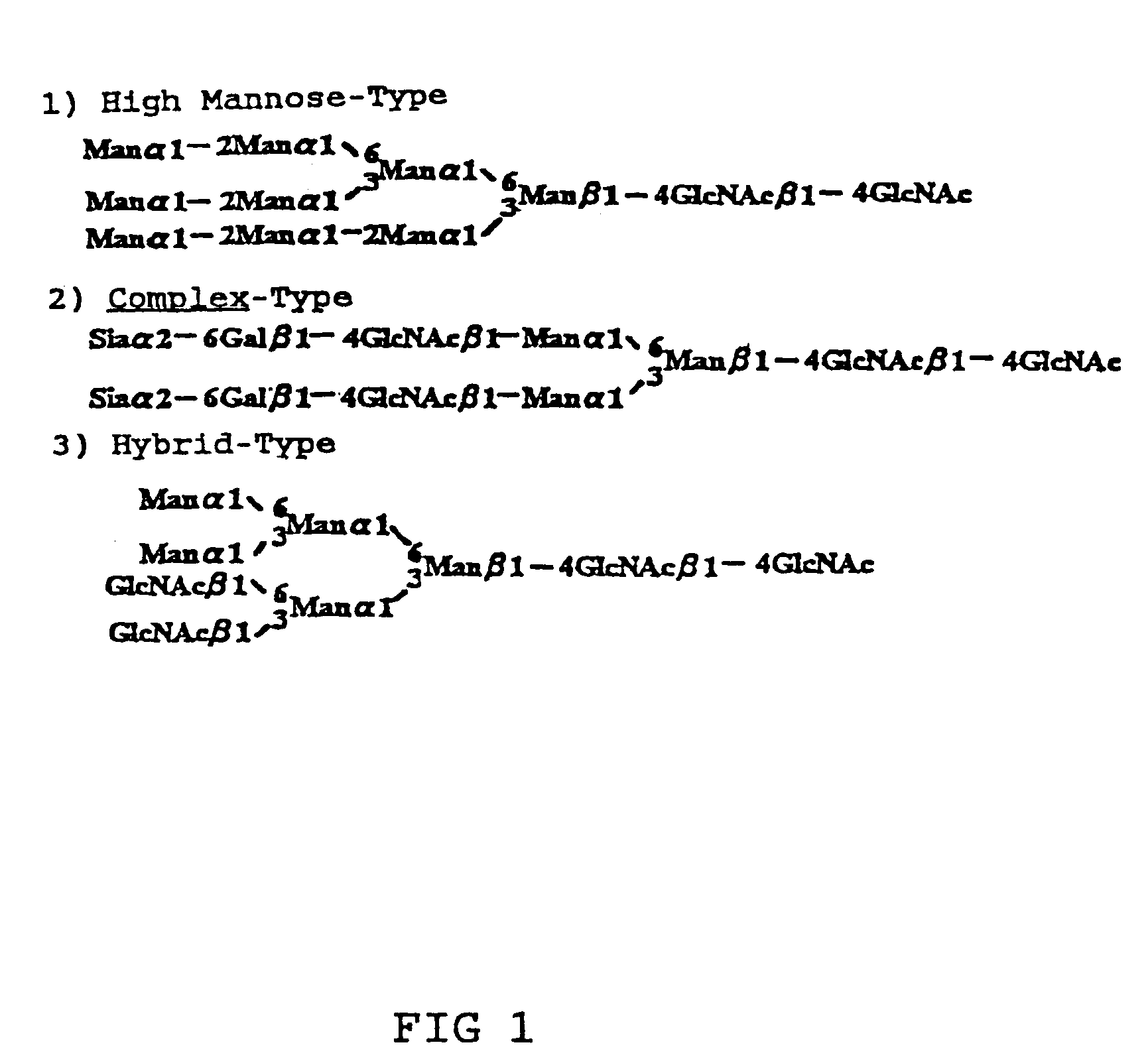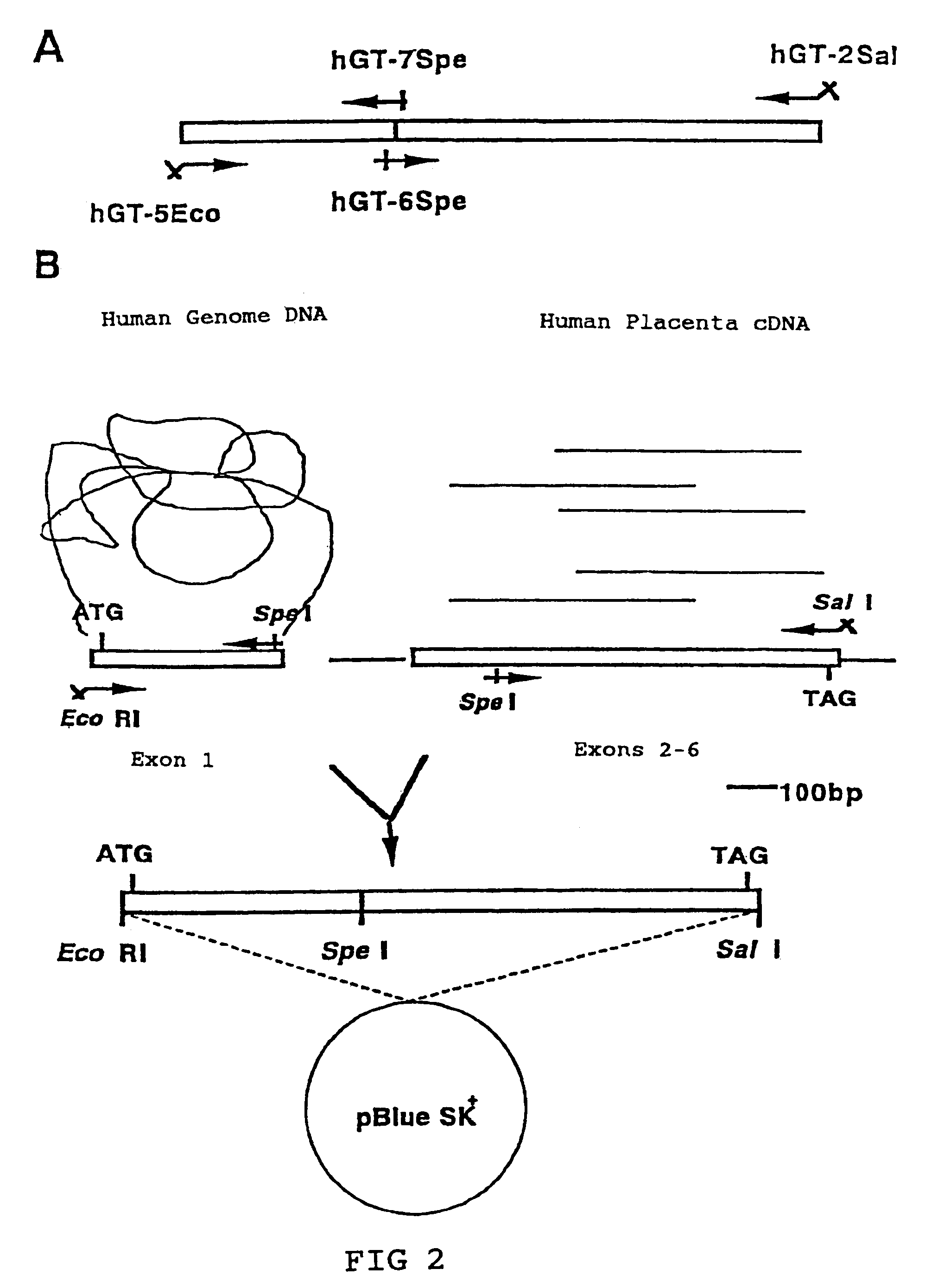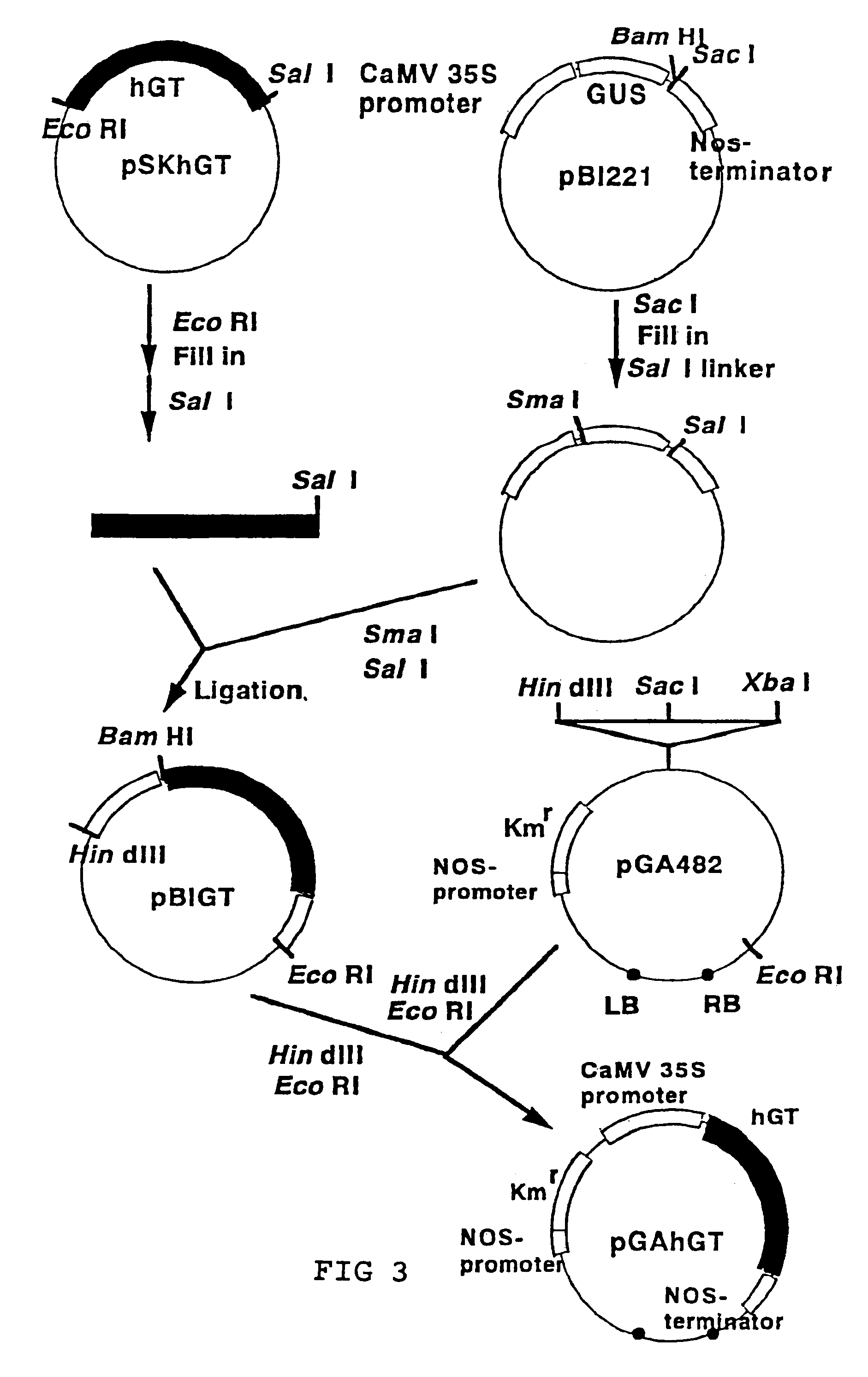Method for manufacturing glycoproteins having human-type glycosylation
- Summary
- Abstract
- Description
- Claims
- Application Information
AI Technical Summary
Problems solved by technology
Method used
Image
Examples
example 1
Cloning Human β1,4 Galactose Transferase Genes
[0064]β1,4 Galactosyltransferase (hGT) genes (EC2.4.1.38) have already been cloned. A primary configuration consisting of 400 amino acids has been discovered (Masri, K. A. et al., Biochem. Biophys. Res. Commun., 157, 657–663, 1988).
(1) Primer Preparation and Template DNA
[0065]The following primers were prepared with reference to the report by Masri et al.
[0066]
hGT-5Eco:(Sequence5′-AAAGAATTCGCGATGCCAGGCGCGCGTCCCT-3′ID:1)hGT-2Sal:(Sequence3′-TCGATCGCAAAACCATGTGCAGCTGATG-5′I.D:2)hGT-7Spe:(Sequence3′-ACGGGACTCCTCAGGGGCGATGATCATAA-5′I.D:3)hGT6Spe:(Sequence5′-AAGACTAGTGGGCCCCATGCTGATTGA-3′I.D:4)
[0067]Human genome DNA, human placenta cDNA, and human kidney cDNA purchased from Clontech were used as the template DNA.
(2) Cloning the hGT Gene cDNA
[0068](i) Human genome DNA was used as the template and hGT-5Eco and hGT-7Spe were used as the primers; (ii) Human placenta cDNA was used as the template and hGT-2Sal and hGT6Spe were used as the primers. ...
example 2
Introduction of the hGT Gene to a Cultivated Tobacco Cell
[0071](1) It has been reported that hGT is expressed in an active form in Escherichia coli (Aoki, D. et al., EMBO J., 9, 3171, 1990 and Nakazawa, K. et al., J. Biochem., 113, 747, 1993). In order for a cultivated tobacco cell to express hGT, the expression vector pGAhGT had to be structured as shown in FIG. 3. A cauliflower mosaic virus 35S promoter (CaMV 35S promoter), which drives gene expression constitutively in plant cells, was used as the promoter. A kanamycin-resistance gene was used as the selection marker. The pGAhGT was introduced to the cultivated tobacco cell by means of Agrobacterium method.
[0072]The Agrobacterium method was performed using the triparental mating method of Bevan et al. (Bevan, M., Nucleic Acid Res., 12, 8711, 1984). Escherichia coli DH5α (suE44, DlacU169, (φ80lacZDM15), hsdR17) (Bethesda Research Laboratories Inc.: Focus 8 (2), 9, 1986) with pGA-type plasmids (An. G., Methods Enzymol. 153, 292, 19...
example 3
Analysis of the Galactosyltransferase Transformant
[0079]The cells of the transformants (GT-1, 6, 8 and 9) and wild-type BY-2 in the fifth through seventh day's culture both were harvested, and then suspended in extraction buffer solution (25 mM Tris-HCl, pH 7.4; 0.25 M sucrose, 1 mM MgCl2, 50 mM KCl). The cells were ruptured using ultrasound processing (200 W; Kaijo Denki Co., Ltd. Japan) or homogenized. The cell extract solution and the microsome fractions were then prepared according to the method of Schwientek, T. et al. (Schwientek, T. and Ernst, J. F., Gene 145, 299–303, 1994). The expression of the hGT proteins was detected using Western blotting and anti-human galactosyltransferase (GT) monoclonal antibodies (MAb 8628; 1:5000) (Uejima, T. et al., Cancer Res., 52, 6158–6163, 1992: Uemura, M. et al., Cancer Res., 52, 6153–6157, 1992) (provided by Professor Narimatsu Hisashi of Soka University). Next, the blots were incubated with horseradish peroxidase-conjugated goat anti-mous...
PUM
| Property | Measurement | Unit |
|---|---|---|
| flow rate | aaaaa | aaaaa |
| Excitation wavelength | aaaaa | aaaaa |
| Excitation wavelength | aaaaa | aaaaa |
Abstract
Description
Claims
Application Information
 Login to View More
Login to View More - R&D
- Intellectual Property
- Life Sciences
- Materials
- Tech Scout
- Unparalleled Data Quality
- Higher Quality Content
- 60% Fewer Hallucinations
Browse by: Latest US Patents, China's latest patents, Technical Efficacy Thesaurus, Application Domain, Technology Topic, Popular Technical Reports.
© 2025 PatSnap. All rights reserved.Legal|Privacy policy|Modern Slavery Act Transparency Statement|Sitemap|About US| Contact US: help@patsnap.com



